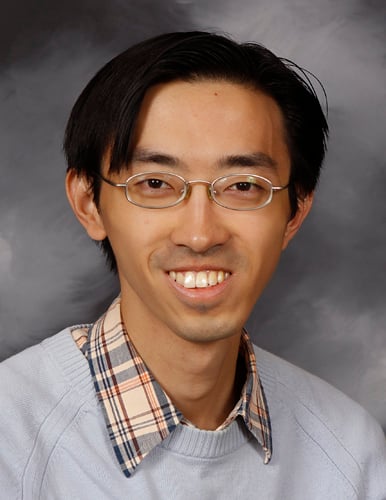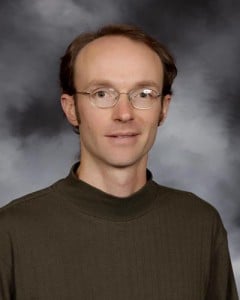Bhakta Rath ’58 is the associate director of research and head of the Material Science and Component Technology Directorate of the US Naval Research Laboratory. He and his wife, Sushama, a computer analyst for the Virginia Community College System, have endowed an annual research award to an outstanding graduate student and faculty adviser for work that will help meet the nation’s needs and the challenges of emerging technologies. Attending the University’s 2011 Spring Commencement, Rath reminisced about his days at Michigan Tech more than 50 years ago and his vision for the future.
Luckily for Michigan Tech–and generations of graduate students and researchers here–Bhakta Rath never did get the hang of speaking German.
“After finishing my bachelor’s degree in India, I got a full scholarship to study in Germany,” Rath recalls. “But after six months trying to learn German, when all I could say was hello, good-bye and where is the bathroom, I realized that this was not the way to get a graduate education.”
So he came to Michigan Tech instead, with a BS in physics and mathematics and not a shred of engineering. When he sat down with the chair of the metallurgical engineering department, Corbin Eddy peered at Rath’s transcript and inquired: “Have you ever had a course in blast furnace?”
“No,” Rath replied.
“Open hearth?”
“No.”
“Welding?”
“No.”
He asked about several other undergraduate courses. The response was the same, “No.”
Eddy shook his head.
“You are going to have to take all the undergraduate courses you would need in preparation for this degree and earn at least a 3.0 in them, plus your graduate courses and thesis,” he said. “It’s going to take you nearly six years to get a master’s.”
Rath politely but firmly disagreed. “I can’t do that,” he said. “My parents are paying for me to study here. I promised to come home in two years with a master’s degree, and that’s what I’m going to do.”
It took a staggering load of over 30 courses a year, but Rath did what he said he’d do. Then his advisor, Roy Drier, dropped another bombshell. “You need to stay one more quarter and take the mandatory course in Michigan history, so we can give you a BS as well as an MS,” Drier told Rath.
But Rath, who had already been accepted to a PhD program at Illinois Institute of Technology (IIT) in Chicago, said no thanks. “I came here for a master’s; I’ll settle for the master’s,” he decided.
Despite his course load, Rath has happy memories of his time at Michigan Tech. He recalls staying in the old Scott Hotel in Hancock over Christmas break, when the University residence halls were closed. “It cost a lot–$1 a day–but with two of us sharing a room, it was only 50 cents each,” he says.
He’ll never forget his first ski adventure either. Some classmates took him up Mt. Ripley. Since Rath had never skied, they wanted to leave him on the easy slope. Rath was having none of that.
“If you are riding the lift to the top, I am, too,” he said. It took his friends about two minutes to ski to the bottom. “It took me two hours,” he says, “on my belly.”
Rath’s determination to complete his graduate degrees took another hit when he actually arrived at IIT. “You can start by forgetting everything you’ve learned at Michigan Tech,” he was told. “You’ll have to start all over and pass a 10-hour oral exam before you can even start on your PhD work.”
At the time, Michigan Tech was known as a practical engineering school, training students to work in heavy-industry settings. “The basic engineering Michigan Tech taught was the best in the country, but the University wasn’t preparing students to think about the basic science behind the engineering,” Rath explains. “Now a Tech education is much more science-based, and that’s a good thing, because we are not training students to work in blast furnaces and open hearths any more. We are preparing them to solve engineering problems, to create entirely new materials, processes and products.”
The engineering challenges are different now, Rath points out. “We used to focus on extracting raw materials and converting them to useable products. In what was then called the metallurgy department, it was all about metals, from mining to mineral dressing to processing. Now the spectrum is much broader, including polymers, ceramics, composites, semiconductors and all kinds of novel materials.”
One of the most serious challenges facing Michigan Tech and the nation today is the need to motivate more young people to go into science, technology, engineering and math, the STEM fields. Rath has made a commitment to help on that front through his work with the American Society for Materials (ASM) International Education Foundation. He is past president of the foundation and now serves on its board of trustees.
ASM develops nearly 50 summer camps for high school students and teachers, sponsored by the foundation, local industries and universities. Michigan Tech sponsored one in 2008.
“We need to excite American students about the STEM fields, and if you excite the teachers, they excite the students,” Rath explains. He has successfully talked the Office of Naval Research into funding summer teachers’ camps.
He’s a big fan of the hands-on approach to motivating the next generation. “Kids need to do things, to analyze real-world problems,” he says. “They need to look at a failed auto part and ask: ‘Why did this shaft fail, and how could we make it better?'”
The challenge of attracting young people to STEM studies is compounded by the trend in American business and industry to outsource not only manufacturing, but research and development.
“There aren’t enough American graduates to fill the STEM jobs,” says Rath. “Universities are training more and more foreign students in STEM fields, but they are returning to their homelands, not contributing to the intellectual capital of the US. This is a very serious challenge for the future of our country.”
by Jennifer Donovan, director of public relations
Published in Tech Today


